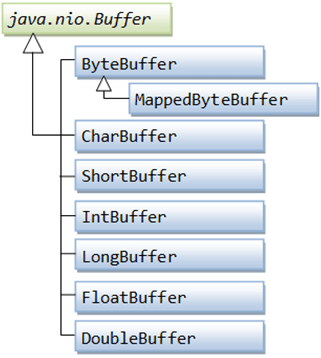Java NIO Buffers
Buffers are defined inside java.nio package. It defines the core functionality which is common to all buffers: limit, capacity and current position.
Java NIO buffers are used for interacting with NIO channels. It is the block of memory into which we can write data, which we can later be read again. The memory block is wrapped with a NIO buffer object, which provides easier methods to work with the memory block.
Types of Buffer
For every primitive type there is a buffer type and all buffer classes can implement the buffer interface. The mostly used buffer type is ByteBuffer.
In Java NIO the core Buffer used are given below:
- CharBuffer
- DoubleBuffer
- IntBuffer
- LongBuffer
- ByteBuffer
- ShortBuffer
- FloatBuffer
The above buffer’s cover the basic data types that we can send via I/O: characters, double, int, long, byte, short and float.
In NIO the data transfer take place by using the buffers implemented in java.nio.Buffer class. It is similar to array, and having a fixed capacity.

Allocating a Buffer
For obtaining a buffer object we must first allocate a buffer. In every Buffer class an allocate() method is for allocating a buffer.
Let’s see the example showing the allocation of ByteBuffer, with capacity of 28 bytes:
Let’s see the example showing the allocation of CharBuffer, with space for 2048 characters:
Reading Data from a Buffer
There are two methods for reading the data from a Buffer:
- Read the data from Buffer by using one of the get() method.
- Read the data from Buffer into a Channel.
Let’s see the example that read the data from Buffer using get() method:
Let’s see the example that read the data from Buffer into a channel:
Writing Data to a Buffer
There are two methods for writing the data into a Buffer:
- Write the data into Buffer by using one of the put() method.
- Write the data from Channel into a Buffer.
Basic Buffer Example
Let’s see the simple example of reading the line from testout.txt file using the BufferedReader:
Output:
The above program read the first line of testout.txt file and then prints the first line of file on a console.
